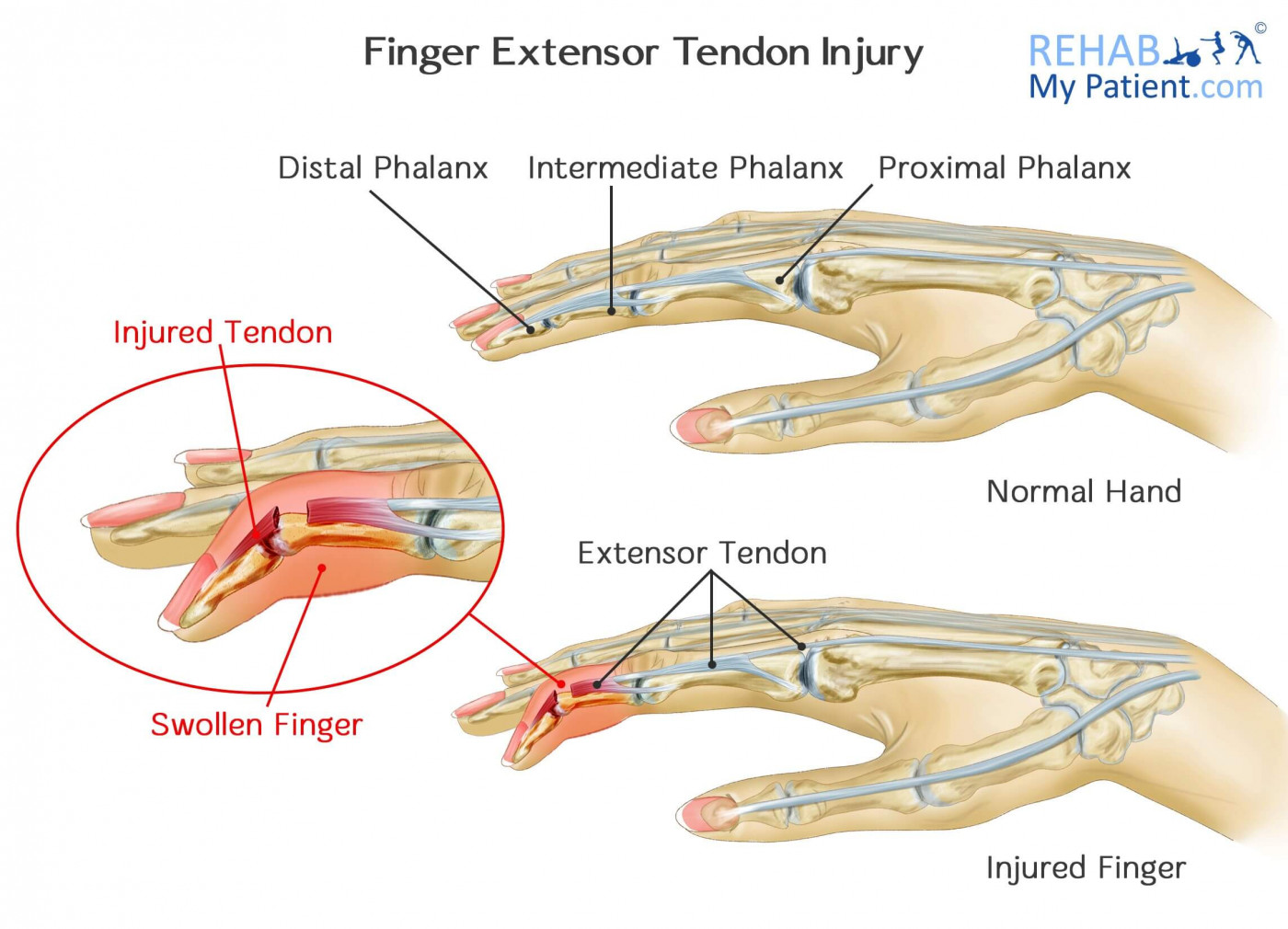Finger Extensor Tendon Injury
Posted on 07th Dec 2017 / Published in: Hand/Fingers/Thumb

When the extensor tendon is damaged, the finger joint can be injured. If an object or ball strikes into the tip of the thumb or the finger, the force ends up damaging the thin tendon that is responsible for straightening the finger. Depending on how strong the blow is, the force could end up pulling part of the bone along with the tendon. The finger or the thumb won’t be able to be straightened out, which is where the condition comes into play.
Finger Extensor Tendon Injury Anatomy
All of the fingers have three distinct bones in them, while the thumb only has two bones. At each one of the joints, the bones are held into place with ligaments. Muscles within the forearm or hand turn into tendons, which attaches the bones to the finger. It is the muscles that move the fingers by pulling the tendons back. All of the bones are attached to the five metacarpal bones making up the body in the hand.
If the extensor tendon is torn or damaged, you will be unable to fully straighten your finger, and it could be painful for several weeks.

How to Treat a Finger Extensor Tendon Injury:
- Ice
Most of the time, a finger extensor tendon injury can be treated without having to undergo surgery. When the injury occurs, you need to apply ice to it immediately. You want to elevate your hand above your heart level. Make sure to seek medical attention within a week to make sure the injury is properly healing. If you notice blood underneath of the nail or it starts to detach, you might have a compound fracture or a nail bed laceration. If you notice excessive swelling or pain in the finger, go and get advice from your medical professional.
- Splint
A splint might be needed to hold your fingertip straight. Most of the time, the splint will need to be worn for eight weeks. Over the following three to four weeks, most individuals will begin wearing the splint less and less often. Even though the finger will regain a decent amount of function and its appearance with this method of treatment, many individuals won’t have full extension of their fingertip.
- Surgery
Surgical repair might be needed when the injury shows a sign of large fragment fractures or misalignment. In these instances, surgery will be performed to repair the part that is fractured using pins, small screws or pins and wires. Surgery is also looked into when all of the nonsurgical alternatives have failed.
It isn’t common for the finger to be treated surgically when fractures and bone fragments aren’t present. Most of the time, this is often reserved for those with major deformities and those who cannot use their finger properly. Treating the damaged tendon might include a tightening of the stretched tendon tissues using a graft or fusing of the joint to make it straight.
Tips:
- Avoiding blunt injuries to the fingertip that force the tip downward help minimize the likelihood of the condition. So be extra careful when catching fast moving balls.
- Using a splint can help to regain straightening of the finger, and is especially useful at night.
- Loss of one finger joint is not seriously negative to the function of the hand, and so some medical experts will advise you to self-manage it.
- Exercises can help to regain tendon strength and mobility to the finger joint, and are very helpful when performed regularly for a few weeks following the injury.
Sign UP
Sign up for your free trial now!
Get started with Rehab My Patient today and revolutionize your exercise prescription process for effective rehabilitation.
Start Your 14-Day Free Trial